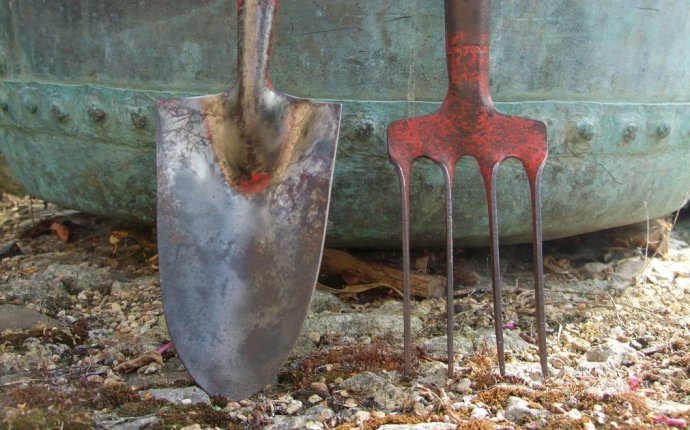
Antique Vintage and Old
 So many terms to define the old junk we come across… {and please, don’t take offense to the use of “junk” – it’s a term of endearment around here}. But what do they all mean? And when should we use each one? And do they all mean the same thing?
So many terms to define the old junk we come across… {and please, don’t take offense to the use of “junk” – it’s a term of endearment around here}. But what do they all mean? And when should we use each one? And do they all mean the same thing?
We’re no experts in junk grammar, but we did take the time to do some internet searching, and consolidate some expert thoughts for you. This is our take on the differences, but know that you may get ten different opinions if you ask ten more people…and we’d love to hear your thoughts, too!
Let’s start with Primitive: The dictionary seems to define primitive as among the first of something, potentially simple and crude, or made by an unschooled artist.
adjective
1. being the first or earliest of the kind or in existence, especially in an early age of the world: primitive forms of life.
2. early in the history of the world or of humankind.
3. characteristic of early ages or of an early state of human development: primitive toolmaking.
4. unaffected or little affected by civilizing influences; uncivilized; savage: primitive passions.
5. being in its earliest period; early: the primitive phase of the history of a town.
6. simple; unsophisticated: a primitive farm implement.
7. crude; unrefined: primitive living conditions.
noun
8. someone or something primitive.
9. Fine Arts. a. an artist of a preliterate culture. b. a naive or unschooled artist. c. an artist belonging to the early stage in the development of a style. d. a work of art by a primitive artist.
Synonyms
1, 2. prehistoric, primal, primary, primordial, original, aboriginal, antediluvian, pristine.
So, all of that tells me that this cupboard would be a good candidate for a Primitive description:
 While this, made to look like it might have been a primitive piece, {maybe you could even say it was made in a primitive-sort-of-style} falls under more of a rustic description:
While this, made to look like it might have been a primitive piece, {maybe you could even say it was made in a primitive-sort-of-style} falls under more of a rustic description:
So, then, what does Rustic mean?
Rustic: We’re reading rustic more as a style of something (a way to describe something) versus a noun or an age-identifier. Where you can call a piece of furniture “a Primitive, ” meaning it’s an early thing, using “Rustic” really only refers to the style and not it’s age. Do you agree?
Adjective
1. of, pertaining to, or living in the country, as distinguished from towns or cities; rural. 2. simple, artless, or unsophisticated. 3. uncouth, rude, or boorish. 4. made of roughly dressed limbs or roots of trees, as garden seats.
Synonyms: rural.
Could a Primitive piece of furniture also be defined as Rustic? We think so! It could be a very early-made piece of furniture {or tool} that also fits the “Country” style. Confused yet? We were, too – but thought these pictures helped to tell the story a bit better:
What about this one? It has the same look as a primitive piece might have – worn with age, not necessarily rustic/country-looking, but appearing as if she’s weathered many storms:

And this one? Vintage, all the way.
How do we differentiate between Antique and Vintage {and Retro}? We love this loose definition found at ApartmentTherapy.com:
1) Antique. Something that is, like, really old. Probably musty, dusty and moldy. Probably made of wood. {we say around 100 years}
2) Vintage. Something that is too old to be considered “used” but not as old as Grandma. {we say between 30 and 80-90 years old}
3) Retro. Something that is basically outdated and out of style. By calling it “retro” the seller hopes to assign sentimental or historical value to something that is simply no longer cool. {we say 10-30 years old}
To sum it all up, Primitive, Antique, and Vintage are terms that primarily refer to the age of an object, or when it was created. Rustic refers to the style of an object.
What do you think? Do these definitions/descriptions resonate with you? Would you add or change anything? If you have examples of any of the things in this post, feel free to link up in the comments below!













